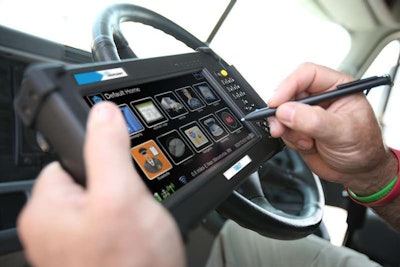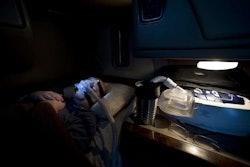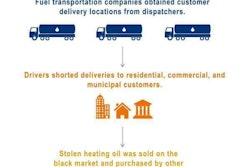
A rule that would impose stiff penalties on carriers, shippers, brokers and others who attempt to pressure drivers to operate beyond federal safety rules has been cleared by the White House’s Office of Management and Budget and sent back to the DOT for publication in the Federal Register.
A proposed version of the rule was published in May 2014, calling for an $11,000 fine for each occurrence of so-called driver coercion, which the rule defined as threatening drivers with “loss of work or other economic opportunities for refusing to operate a CMV” in violation of hours rules or other regulations. The driver coercion rule is related to the DOT’s electronic logging device mandate, also set to be published this year.
The DOT, in its monthly regulatory update, projects the driver coercion rule to be published next Monday, Nov. 23.
The rule is the first to be cleared for publication in what could be a flurry of end-of-year regulatory activity for the trucking industry.
The DOT projects four other major rules to be published by year’s end, including Final Rules to mandate the use of electronic logging devices and speed limiters, along with a rule to set standards for entry-level driver training and the Federal Motor Carrier’s Safety Administration’s Safety Fitness Determination rule, an effective extension of the agency’s CSA program.
The ELD rule is expected to be cleared Nov. 20 by the OMB and be published Nov. 30. The rule will require, two years after its publication, for all drivers currently required to keep paper logs to use ELDs. The rule will also set minimum standards for the ELD hardware and software and outline penalties for using the devices to harass truck operators.
The rule, however, has already missed its expected publication date twice this year — Sept. 30 and Oct. 30.
The rule to mandate the use of speed limiters on heavy trucks is expected to clear the OMB Nov. 25 and be published Dec. 3. This is the proposed version of the rule, so the DOT must take comment on the rule and then go back through the rulemaking process another time before publishing a final version of the rule.
The entry-level driver training rule, also in its proposed form, is scheduled to clear the OMB Dec. 18 and be published Dec. 28.
The Safety Fitness rule is expected to be published Nov. 24, but it’s projected OMB clearance date, Nov. 13, has already passed, and the rule is still with the OMB.














